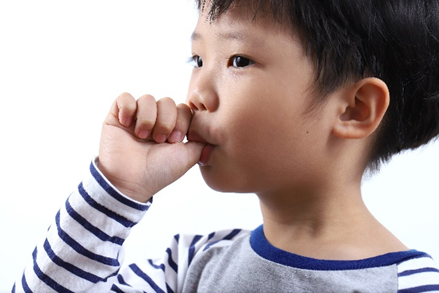Ranging from thumbs and fingers, sucking is a rather common phenomenon among children, known to soothe them in times of distress. With that in mind, and recognizing the importance of clean hygiene, pacifiers work as generally the best option.
Now comes a pertinent question – is this healthy for the child?
While pacifiers are safe to use and fit in with natural inclinations, they tend to cater to the reflex action of children. Nevertheless, if continued out of habit, it can lead to serious dental health concerns.
From Pesky to Persistent
Regardless of the method adopted by the child, both thumb-sucking or pacifier use can evolve into a plethora of issues and malocclusions which poorly impact a child’s quality of life well into adulthood. A few worth mentioning include;
- Open Bite: Both the upper and lower teeth slant outward failing to make contact with each other, even when the jaw is shut. Often creating issues with speaking, chewing, swallowing and more.
- Overbite: The upper teeth protrude past the lower teeth beyond the natural standard. Serious overbites may result in painful side effects such as tooth decay, gum disease, or jaw pain.
- Crossbite: A misalignment where the upper teeth fit inside of the lower teeth in their natural position. If left unchecked, this could lead to lopsided growth, where the jaw shifts too far to one side.
- Skin Irritation: Excessive pacifier usage often leads to a child’s chin, neck, and even chest to be constantly exposed to drool. The wet skin can become quickly irritated and lead to drool rash; causing discomfort or even pain.
If left unchecked, most of these malocclusions will evolve alongside the child and negatively impact their livelihood down the road. For instance, speech impediments can be traumatizing for young people seeking to properly socialize.
Outgrowing Young Habits
Ideally, children stop sucking their thumbs between the ages of two to four years old. If the habit persists beyond this age, depending how frequent and intense, it could seriously impair the intended development of their permanent front teeth and the shape and structure of their mouth.
It’s highly recommended to get in touch with a dental professional so issues are caught early on and strategies or treatments can be recommended and monitored properly.
Pacifiers Vs. Thumbs
Like anything it boils down to personal preference, meaning there’s no right or wrong option here.
Thumb sucking is the natural inclination performed by most babies. Being part of the human physique, thumbs don’t get misplaced under the couch like a pacifier. However, thumbs and fingers are still a breeding ground for dirt and bacteria, especially once a child becomes more mobile and explorative.
Pacifiers, if cleaned thoroughly could pose as a more sanitary alternative, not to mention they are easily available for purchase in a variety of colours and styles. Bonus points are also applied for being rather inexpensive, though they still aren’t as accessible as one’s own thumb!
Steps For Change
Identify the Triggers
It can range from mere feelings of boredom, to sleepiness, to hunger, and even stress. Once the root cause is recognized, it’s easier to present them with alternative activities to channel their attention towards.
Positive Reinforcement
It’s crucial to praise your child, or even reward them modestly when they make the conscious decision to not resort to this habit. You can practice this through a multitude of methods, including a sticker chart tracking good behaviour!
Orthodontic Devices
Consult with a dental professional regarding the best method suited for your child’s needs. Note that there are two types of devices – removable and non-removable.
Thumb Shields
Options vary between soft plastic or fabric thumb guards, which are conveniently available without a prescription. Other alternatives include shielding the thumb during sleep with a glove or other fabric covering.
Though pacifiers and thumbs may have their differences, they often lead to the same issues. Remain vigilant on the fact that identifying and correcting the root of the habit is the most effective method. Resulting in not only a healthy oral anatomy, but beneficial behavioural patterns they can use for other challenges in life as they mature.
Remember, professionals recommend children begin routine dental visits by age one! While children don’t have permanent teeth until age six, their future development is already being determined. If you see any cause for concern in your child’s oral health or behaviour, please book a consultation as soon as possible!


